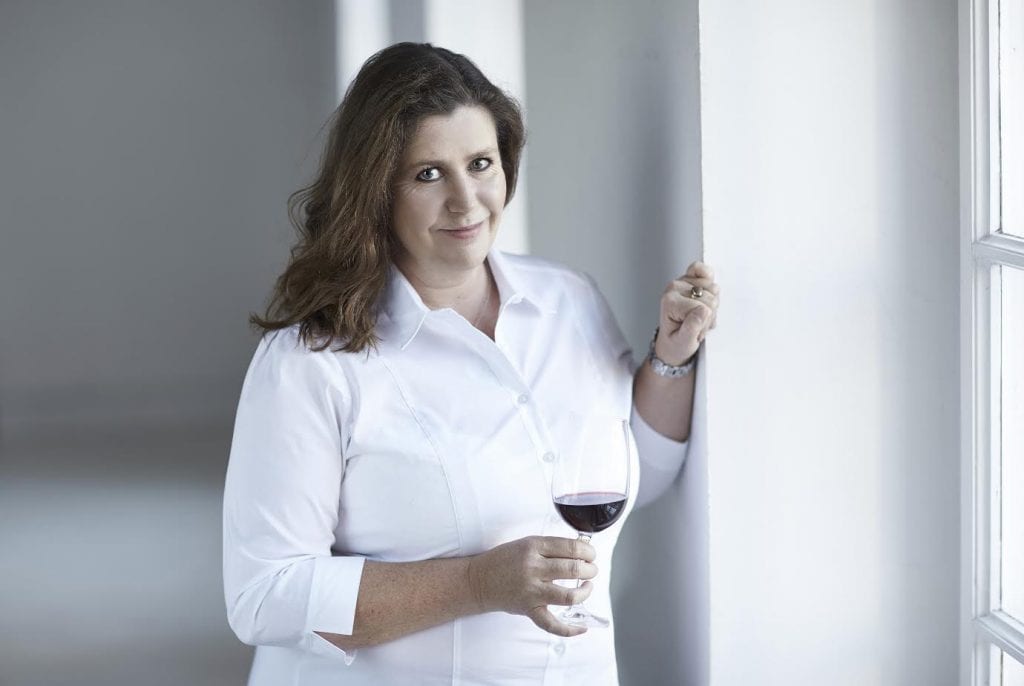Sue Tolson has become increasingly involved in the Hungarian wine scene, having been based in Budapest for several years. Amanda Barnes interviews her to find out what’s happening in Hungarian wine and why she’s also keen to unite volcanic wine producers from around the world.
What first sparked your interest in wine?
My dad enjoyed wine, so I was always a little interested. Funnily enough, he travelled on business a lot to Eastern Europe and had discovered Tokaj wines and Bikavér on his travels, so I remember tasting those with him. Also while my mum was pregnant with me, they were on a holiday in Bulgaria where the wine apparently flowed and my dad often joked that this was why I like wine!
However, I think it really began at university when I spent a month at a French language summer school at Bordeaux University and there was the option to do a wine-tasting course each Friday afternoon, which I did. From then on, I always enjoyed wine, but I think that it was only much later, when I was living in Hungary, that I really became hooked.
You have lived in several European countries in the past two decades, did any of them have a profound impact on shaping your wine education or appreciation, and how?
Over the past two decades, I’ve lived in Hungary, Poland, Italy and Germany. In Poland, at the time (around 1999), there was not much to be had other than dodgy Bulgarian and Hungarian wine, although things have really changed now, with a huge interest in wine and wineries springing up in Poland too. Interestingly, it was not Italy, as I had nothing to do with wine at the time, although I have since remedied that and have spent considerable time and energy learning about Italian wine, and now also write about it on my The Italian Wine Job blog.
It was Hungary that had the most impact on shaping my wine appreciation. I’ve lived in Hungary on and off, now mostly on, for much of this time and have seen how wines have improved and how the wine scene has changed during this time. From mostly cheap, unpalatable wines to real diversity and greatly improved quality.
You are now based in Budapest. Tell us about the wine scene and business there.
The wine scene in Budapest is really buzzing. If you wanted, you could probably go and taste wine somewhere most evenings. There are numerous tastings, large and small throughout the year and a growing interest in the subject, with many people taking WSET courses just for their own pleasure.
Wine bars have sprung up in the city over the last few years, mostly focussing on Hungarian wine, although there is also an excellent Italian wine bar and shop, an Austrian one and now another focussing on the wines of the former Austro-Hungarian monarchy. Wine festivals are also very common throughout the country and even small towns will have some kind of festival involving wine and food at some point in the year.
People generally drink Hungarian wine, although there are of course other wines available. Wine lovers are increasingly interested in local Hungarian varieties and there is less of a focus on international varieties, although in supermarkets, of course, the choice is more middle of the road than in specialist wine shops, which tend to focus on better quality, often smaller, predominantly Hungarian producers.
In the summer, many people will drink a range of wine spritzers, all with different names depending on the ratio of soda water to wine, but most commonly known as fröccs. Rosé is very popular in summer, even in fröccs, and sparkling wine in many guises is also increasingly drunk.
What excites you at the moment about Hungarian wine?
What is exciting about Hungarian wine at the moment is the focus on indigenous varieties and traditional blends. Varieties such as Kéknyelű in Badacsony and Juhfark in Somló are being increasingly planted and high-quality wines made from them. Furmint and Kadarka, for example, are becoming national wine heroes as winemakers seek differentiation for Hungarian wines and for their own regions.
We are increasingly seeing producers working together to create an image for their region, defining flagship varieties, blends and quality levels. This is really helping to pull up the quality of wines in general and also making Hungarian wine more interesting as producers move away from planting international varieties and revive sometimes almost extinct varieties and maligned wine styles and create more contemporary versions of them.
The producers of Szekszárd and Eger have both made great leaps forward in improving the quality and consistency of their Bikavér blends. Winemakers around the Balaton have launched a brand based on Olaszrizling, Balatonbor, that aims to improve the image of the variety and also showcase the terroir around the lake.
The volcanic wines from the northern Balaton, Somló and Tokaj are also fashionable and last year we organised the first #govolcanic festival in Budapest to showcase these, also inviting volcanic winemakers from around the world to participate. Szekszárd’s reds are also exciting and elegant, with a focus on the trio of Kadarka, Kékfrankos and Bikavér.
What’s coming up for Sue Tolson at the end of 2020?
Well, as you know, I started on the Master of Wine programme this last year, so much of my free time is taken up with that. However, I hope we will continue to organise #govolcanic and bring in more international producers, although what will happen this year is difficult to say due to the current pandemic situation.
I’m getting more involved in WSET education and hopefully also Italian wine education as well as continuing my involvement with the WineSofa website focussed on Central and Eastern Europe and writing my Italian wine blog. So, I think there is plenty to keep me busy!

